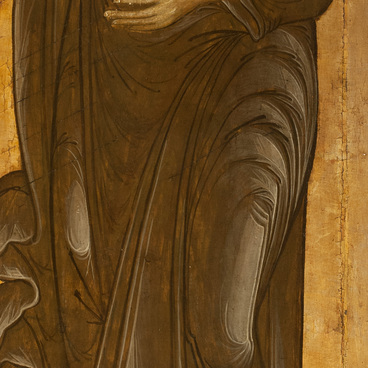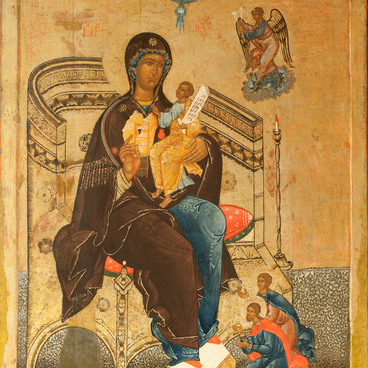The Presentation of the Blessed Virgin Mary is one of the Twelve Great Feasts. It is considered an event that foreshadowed God’s blessing to humanity and the coming of Jesus Christ. The feast is associated with the events recounted in the apocryphal Protoevangelium of James.
The story focuses on the childhood of the Virgin Mary. Her parents, the righteous saints Joachim and Anne, had been childless for a long time and vowed that they would dedicate their child to God. When Mary was only three years old, Her parents dressed Her in the best clothes and brought Her to the Temple in Jerusalem. She was accompanied by people singing and holding candles. She was to remain at the Temple to be educated. Mary was met by Zacharias, a priest and the father of John the Baptist.
In the Temple, Mary was brought up in the community of pious virgins, practiced handicrafts, and prayed, as described in hymns dedicated to Her. During that time, She was nourished by an angel. The icon depicts the Priest Zacharias blessing Mary and welcoming Her on the steps of the Temple.
Mary was followed by Her parents, Anne and Joachim, who brought Her “as the Living Temple of God.” Behind them came the virgins, with their heads uncovered. In the upper part of the icon, the painter depicted the Blessed Virgin Mary and the angel who brought Her food.
The action takes place inside the Temple in Jerusalem. The Blessed Virgin Mary lived there until reaching adulthood. She grew up pious, obedient to God, very modest, and hardworking. Later, Joseph of Nazareth, a widowed carpenter, was chosen as Mary’s husband.
The background and margins of this icon are gilded. The reverse side is covered with gesso (a mixture of chalk and animal or fish glue) and painted. The icon is painted on a solid board without any connecting strips of wood. There is also a recessed central area.
The icon features an
inscription written in black ink in three lines,


